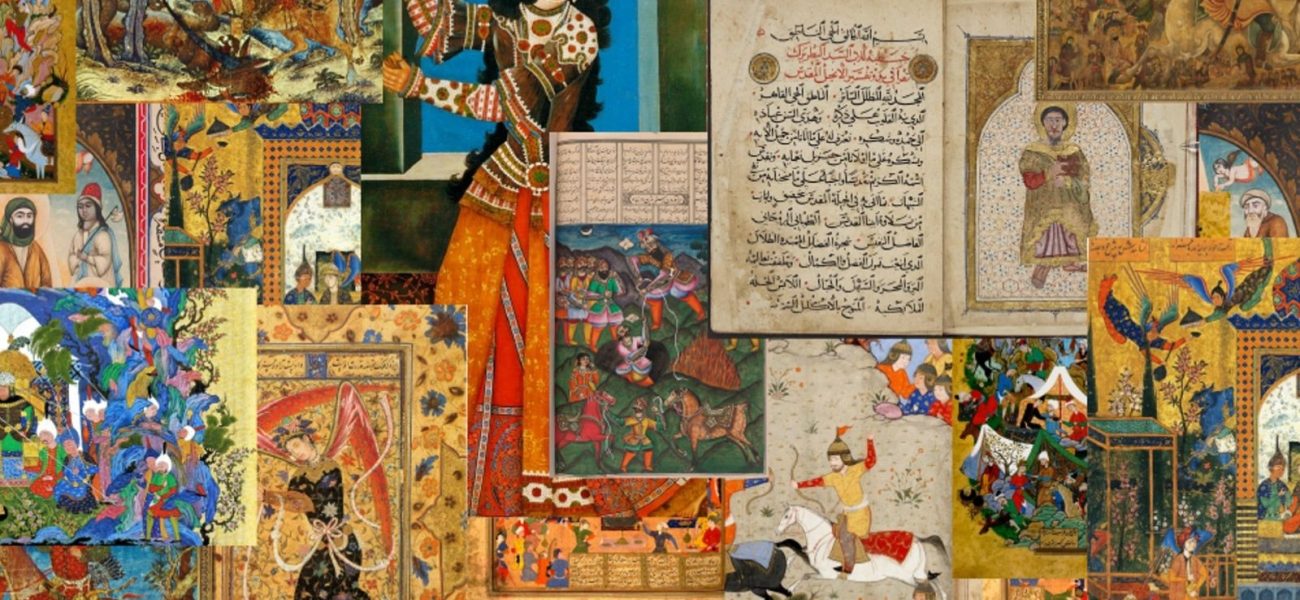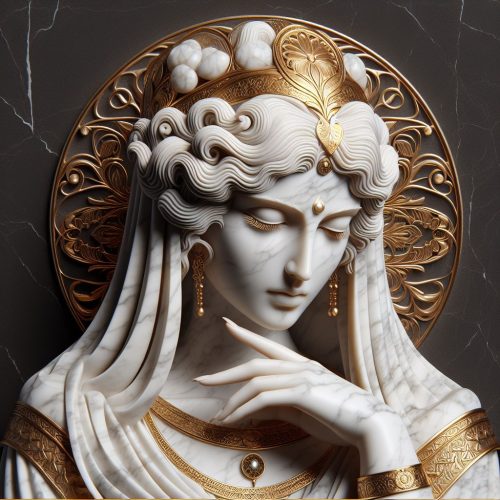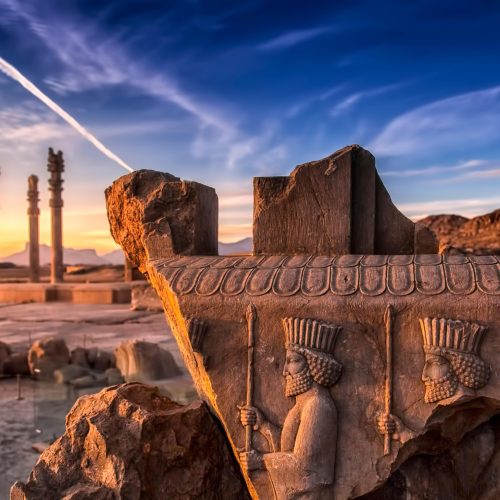Classical Persian poetry stands as a testament to the enduring power of language and imagination, weaving together threads of beauty, mysticism, and philosophical depth to create a rich tapestry of literary expression. Spanning over a millennium of cultural and literary evolution, Persian poetry has captivated the hearts and minds of readers around the world with its lyrical verses, intricate imagery, and profound insights into the human condition. In this scholarly article, we embark on a journey through the annals of Persian literature, exploring the origins, themes, and artistic innovations of classical Persian poetry, and its enduring legacy in shaping the cultural landscape of Iran and beyond.
Origins and Development
The origins of Persian poetry can be traced back to the ancient cultural traditions of Iran, where oral storytelling and poetic recitations played a central role in communal gatherings, rituals, and celebrations. The early poetry of Iran was characterized by its emphasis on heroic deeds, mythological narratives, and praise of tribal chieftains and rulers. These oral traditions laid the foundation for the development of written literature in Iran, which began to flourish during the Sassanian Empire (224-651 CE).
During the Sassanian period, Persian literature experienced a renaissance, fueled by the patronage of royal courts and the cultivation of literary circles where poets, scholars, and intellectuals gathered to exchange ideas and refine their craft. The court of the Sassanian monarch Khosrow I (r. 531-579 CE) became a center of literary activity, attracting poets and scholars from across the empire and beyond. It was during this period that classical Persian poetry began to emerge as a distinct literary tradition, characterized by its sophisticated language, refined imagery, and poetic forms.
One of the most significant contributions to Persian literature during the Sassanian period was the adaptation of the Arabic script for the Persian language, which enabled the transcription and preservation of Persian poetry in written form. Prior to this development, Persian poetry had been primarily oral, passed down through generations via memorization and recitation. The introduction of the Arabic script facilitated the spread of Persian literature and paved the way for its transformation into a written tradition.
The Islamic conquest of Iran in the 7th century CE brought profound changes to Persian culture and society, as Islam became the dominant religion and Arabic replaced Persian as the language of administration and scholarship. Despite these changes, Persian continued to thrive as a spoken language, and Persian poets adapted to the new cultural milieu by incorporating Islamic themes, motifs, and literary forms into their poetry.
The flourishing of Persian literature reached its zenith during the Islamic Golden Age (8th-14th centuries CE), a period of cultural, intellectual, and artistic achievement in the Islamic world. Persian became the lingua franca of the vast territories encompassing Iran, Central Asia, Anatolia, and the Indian subcontinent, facilitating the exchange of ideas, languages, and literary traditions across diverse cultural landscapes.
It was during this period that Persian poetry experienced its golden age, producing a galaxy of literary luminaries whose works continue to captivate readers around the world. Poets such as Ferdowsi, Rumi, Hafez, Saadi, and Khayyam emerged as towering figures in the pantheon of Persian literature, each contributing to the rich tapestry of themes, styles, and artistic innovations that define classical Persian poetry.
The literary achievements of these poets were supported by the patronage of royal courts, wealthy merchants, and enlightened rulers who recognized the cultural and intellectual value of Persian literature. Poets were often invited to serve as courtiers, advisors, and tutors, where they enjoyed prestige, patronage, and opportunities for artistic expression.
The advent of Sufism, a mystical movement within Islam, also had a profound impact on Persian poetry, infusing it with spiritual depth, symbolism, and allegory. Sufi poets such as Rumi, Attar, and Sanai used poetry as a medium for expressing their experiences of divine love, inner transformation, and the quest for spiritual enlightenment. Through their verses, Sufi poets sought to awaken the hearts of readers, inviting them to embark on a journey of self-discovery, inner purification, and union with the Divine.
The origins and development of classical Persian poetry are marked by a rich tapestry of cultural, linguistic, and literary influences that span over a millennium of cultural and intellectual evolution. From its humble beginnings in oral tradition to its flourishing as a written literary tradition, Persian poetry has served as a mirror reflecting the aspirations, ideals, and experiences of generations of poets and readers alike. Through its enduring legacy, classical Persian poetry continues to inspire, illuminate, and enrich the hearts and minds of readers around the world, offering a timeless testament to the power of language, imagination, and human expression.
Themes and Motifs
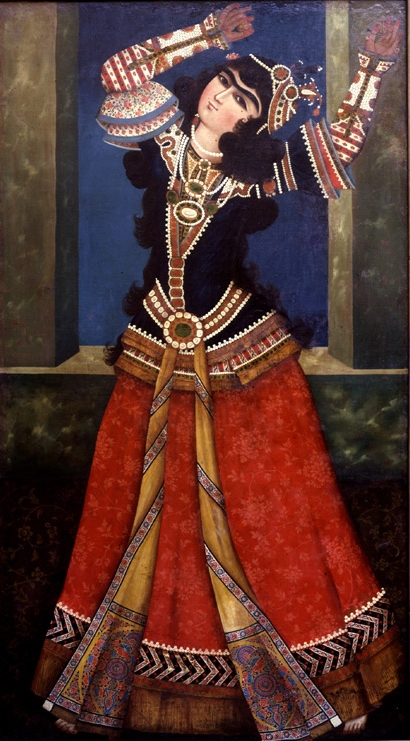
Classical Persian poetry is renowned for its thematic breadth and depth, encompassing a wide range of topics and emotions that reflect the complexities of human experience.
Love and Longing
Love occupies a central place in classical Persian poetry, symbolizing both earthly passion and spiritual yearning. Poets such as Rumi, Hafez, and Khayyam explore the theme of love through a variety of lenses, from romantic and sensual to mystical and divine. In Persian poetry, love is often depicted as a transformative force that transcends earthly desires and leads the soul on a journey of self-discovery and union with the Beloved. Through metaphors of wine, intoxication, and the tavern, poets evoke the ecstasy and agony of love, inviting readers to contemplate the mysteries of the heart and the nature of desire.
Nature and Symbolism
Nature serves as a rich source of inspiration and symbolism in classical Persian poetry, evoking a sense of wonder, beauty, and harmony with the natural world. Poets draw upon the imagery of landscapes, seasons, flowers, and birds to convey deeper truths about life, death, and the cyclical nature of existence. The rose, in particular, holds special significance in Persian poetry, symbolizing love, beauty, and the ephemeral nature of life. Through vivid descriptions of nature’s splendor and majesty, poets invite readers to contemplate the interconnectedness of all living beings and the divine order that governs the universe.
Spirituality and Mysticism
Sufi mysticism permeates much of classical Persian poetry, infusing it with spiritual depth, symbolism, and allegory. Sufi poets such as Rumi, Attar, and Sanai use poetry as a vehicle for expressing their experiences of divine love, inner transformation, and the quest for spiritual enlightenment. Through metaphorical language, paradoxical imagery, and ecstatic utterances, Sufi poets convey the ineffable nature of the divine and the soul’s longing for union with the Beloved. Themes of spiritual awakening, self-realization, and the annihilation of the ego are recurrent motifs in Sufi poetry, inviting readers to embark on a journey of inner exploration and self-discovery.
Morality and Ethics
Classical Persian poetry often contains moral teachings and ethical reflections embedded within its verses. Poets such as Saadi and Rumi impart wisdom and guidance through allegorical stories, moral parables, and ethical maxims that offer insights into human behavior, virtue, and the pursuit of a righteous life. Themes of compassion, generosity, humility, and justice are woven throughout Persian poetry, reminding readers of the importance of integrity, kindness, and moral conduct in navigating the complexities of existence.
Political and Social Commentary
Persian poets frequently engage with political and social issues of their time, offering critiques of power, corruption, and injustice, as well as reflections on the human condition and the vicissitudes of fortune. Poets such as Ferdowsi and Khayyam use their verses to challenge societal norms, question authority, and advocate for the rights and dignity of the individual. Through satire, irony, and wit, Persian poets expose the follies and hypocrisies of the ruling elite, while championing the values of freedom, equality, and human rights.
The themes and motifs of classical Persian poetry encompass a wide range of topics and emotions, reflecting the complexities of human experience and the depth of the human soul. Through its exploration of love, nature, spirituality, morality, and social commentary, Persian poetry continues to resonate with readers around the world, offering timeless insights and inspiration for generations to come.
Artistic Innovations
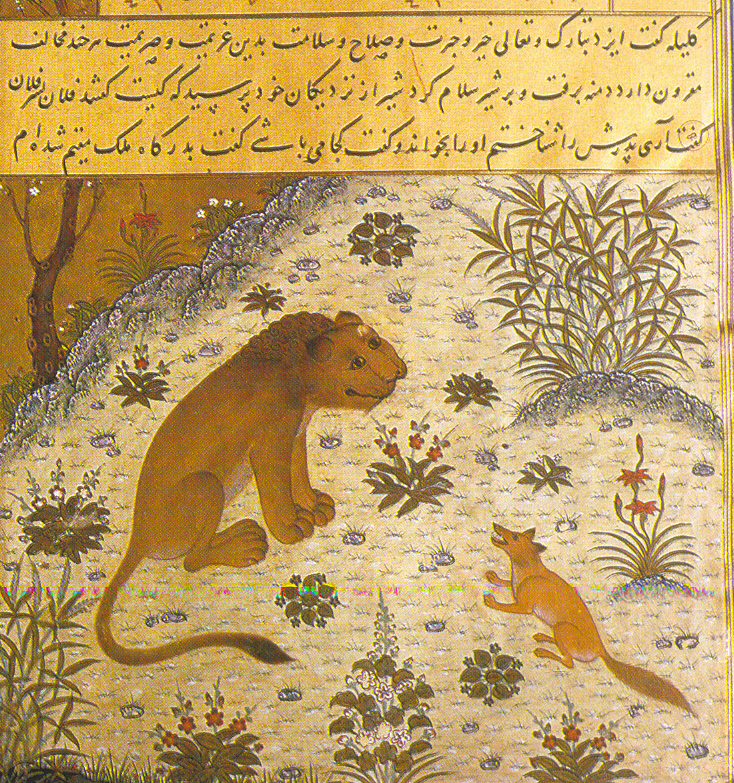
Classical Persian poetry is distinguished by its artistic innovations, including distinctive poetic forms, meters, and rhetorical devices that lend depth and beauty to the verses.
Ghazal
One of the most celebrated poetic forms in classical Persian poetry is the ghazal. Originating in Arabic poetry, the ghazal was adapted and refined by Persian poets, becoming a quintessential expression of lyrical beauty and emotional intensity. The ghazal typically consists of rhyming couplets, each expressing a complete thought or emotion, while exploring themes of love, longing, and metaphysical yearning. Poets such as Hafez and Saadi mastered the art of the ghazal, using its structured form to convey profound insights and emotional depth with brevity and elegance.
Masnavi
Another significant poetic form in classical Persian literature is the masnavi, a narrative poem consisting of rhyming couplets. Unlike the ghazal, which focuses on individual emotions and experiences, the masnavi allows poets to weave intricate stories, allegories, and moral parables that convey profound philosophical insights and ethical teachings. Rumi’s “Mathnawi” or “Masnavi-i Ma’navi” is a prime example of this genre, a six-volume epic poem that explores the journey of the soul from separation to union with the Divine. Through its rich narrative tapestry and spiritual allegories, the masnavi provides readers with a roadmap for spiritual growth and self-realization.
Qasida
The qasida is another important poetic form in classical Persian poetry, characterized by its formal structure, elaborate imagery, and panegyric praise. Originating in pre-Islamic Arabia, the qasida was adapted by Persian poets to eulogize rulers, patrons, and beloveds, while showcasing their mastery of language, rhetoric, and poetic ornamentation. Qasidas often consist of several stanzas, each celebrating a different aspect of the subject’s virtues, achievements, or beauty. Poets such as Ferdowsi and Khayyam excelled in the composition of qasidas, using their poetic skills to immortalize the glory and grandeur of kings and courtly patrons.
Use of Symbolism and Allegory
Classical Persian poetry is renowned for its use of symbolism, metaphor, and allegory to convey deeper truths and insights about the human condition and the nature of existence. Poets draw upon a rich tapestry of symbols and metaphors, from the rose and nightingale to the wine goblet and tavern, to evoke emotions, provoke contemplation, and illuminate spiritual truths. Through allegorical imagery and mystical symbolism, poets such as Rumi and Attar invite readers to transcend the limits of the material world and glimpse the eternal realities that lie beyond the veil of appearances.
Musicality and Rhythm
Persian poetry is characterized by its musicality and rhythmic cadence, which enhance the aesthetic impact of the verses and engage the senses of the reader or listener. Poets pay careful attention to the sound and rhythm of their poetry, employing techniques such as meter, rhyme, and alliteration to create harmonious and melodic compositions. The rhythmic flow of Persian poetry, combined with its rich imagery and evocative language, creates an immersive experience that captivates the imagination and resonates with the emotions of the audience.
The artistic innovations of classical Persian poetry encompass a wide range of poetic forms, techniques, and stylistic devices that contribute to its enduring beauty and literary significance. Through its mastery of forms such as the ghazal, masnavi, and qasida, as well as its use of symbolism, allegory, and musicality, Persian poetry continues to inspire and enchant readers around the world, inviting them to embark on a journey of discovery and enlightenment through the power of language and imagination.
Legacy and Influence
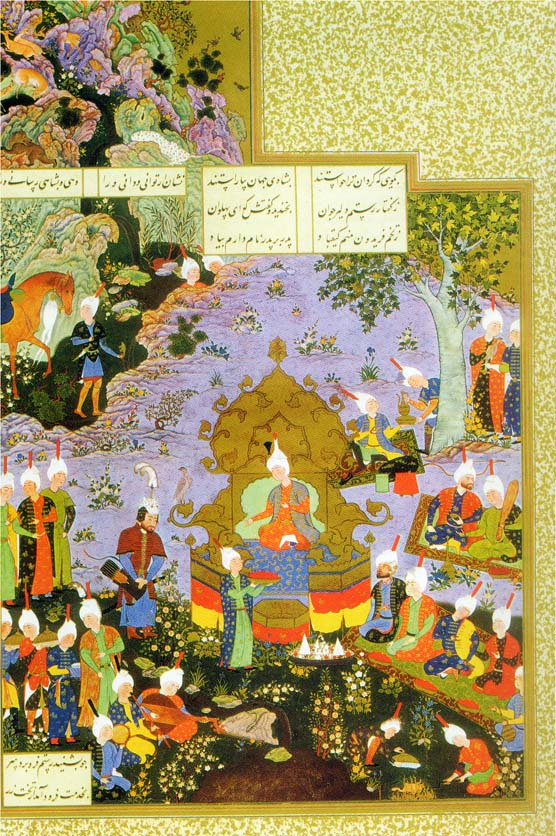
Cultural Transmission and Influence
The legacy of classical Persian poetry extends far beyond the borders of Iran, permeating the cultural landscapes of the Islamic world and beyond. Persian poetry served as a bridge between diverse cultures, facilitating the transmission of knowledge, ideas, and artistic traditions across linguistic and geographical boundaries. Through translations, adaptations, and cultural exchanges, Persian poetry influenced the development of literary traditions in regions such as Central Asia, the Indian subcontinent, and the Ottoman Empire, leaving an indelible mark on the literary heritage of these regions.
Literary Traditions and Adaptations
Persian poetry inspired the development of literary traditions in neighboring cultures, where poets and writers drew upon Persian themes, motifs, and poetic forms to enrich their own artistic expressions. In Central Asia, poets such as Omar Khayyam and Nizami Ganjavi built upon the legacy of Persian poetry, composing works that resonated with the spirit of Persian literary tradition while incorporating elements of their own cultural heritage. In the Indian subcontinent, Persian poetry flourished alongside indigenous literary traditions, leading to the emergence of a rich synthesis of Persian and Indian literary styles known as “Indo-Persian” literature.
European Reception and Translation
The influence of Persian poetry reached Europe through translations and adaptations that captivated the imaginations of Western intellectuals, poets, and artists. In the 18th and 19th centuries, European scholars such as Sir William Jones and Edward FitzGerald introduced Persian poetry to Western audiences through translations of works such as the “Shahnameh” and the “Rubaiyat of Omar Khayyam.” These translations sparked a renewed interest in Persian literature and culture among European writers and thinkers, inspiring literary movements such as Romanticism and Symbolism.
Modern Relevance and Revival
Classical Persian poetry continues to resonate with readers around the world, transcending temporal and cultural boundaries to touch the hearts and minds of contemporary audiences. In Iran, classical Persian poetry remains a vital part of the cultural consciousness, celebrated through recitations, performances, and literary festivals that honor the legacy of past masters and inspire new generations of poets and writers. Beyond Iran, Persian poetry enjoys a global audience through translations, academic study, and cultural exchange programs that promote cross-cultural dialogue and appreciation.
Cultural Diplomacy and Soft Power
Persian poetry serves as a powerful tool for cultural diplomacy and soft power, enhancing Iran’s cultural influence and global reputation. Through initiatives such as the UNESCO World Poetry Day and the International Conference on Persian Language and Literature, Iran promotes the study and appreciation of Persian poetry as a means of fostering intercultural understanding, dialogue, and cooperation. Persian poets such as Rumi and Hafez have become symbols of Iran’s cultural heritage and values, transcending national boundaries to inspire people of diverse backgrounds and beliefs.
the legacy and influence of classical Persian poetry are vast and multifaceted, spanning centuries of cultural exchange, literary innovation, and artistic expression. From its origins in ancient Iran to its global reach in the modern era, Persian poetry continues to inspire, illuminate, and enrich the lives of readers around the world, offering a timeless testament to the power of language, imagination, and human expression.
Classical Persian poetry stands as a testament to the enduring power of human creativity, imagination, and expression, transcending temporal and cultural boundaries to touch the hearts and minds of readers across generations. Through its lyrical verses, intricate imagery, and profound insights, Persian poetry invites us to explore the depths of the human soul, contemplate the mysteries of existence, and glimpse the eternal truths that lie beyond the veil of words. In celebrating the rich heritage of classical Persian poetry, we honor the contributions of past masters and embrace the transformative power of language and art to illuminate, inspire, and unite humanity in a shared journey of beauty and meaning.

